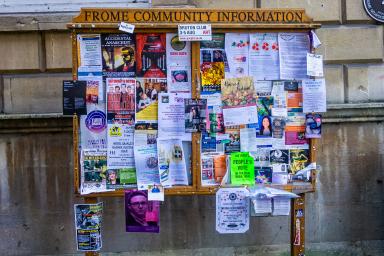10 LinkedIn marketing tips to grow your business in 2025
More than 61 million companies have pages on LinkedIn, making it a popular platform for networking, lead generation, and job hunting.
LinkedIn can also help companies of all sizes with their business to business (B2B for short) marketing efforts.
But how can your start-up stand out on such a crowded platform?
Having a clear, well-thought-out LinkedIn marketing strategy could be one way to attract new customers, connect with organisations in your industry, and boost your brand presence.
If you need help setting up a LinkedIn page for your start-up, visit our guide on creating a LinkedIn page for your business.
Want to explore other social media platforms? Read our guides to advertising and marketing on:
1. Identify your goals
Like any business strategy, identifying end goals can be a sensible first step.
For B2B LinkedIn marketing, there can be several marketing goals you might want to accomplish on the platform, including:
- increasing brand authority
- lead generation and capture
- service or event promotion
- driving targeted traffic to your website.
Once you’ve decided on your goals, consider creating a marketing plan that delivers the desired results.
Discover our Start Up Loans free guides to help your start-up business with support on marketing growth and creating your social media strategy.
2. Have a complete business page
Completing your LinkedIn page with the relevant details may help increase brand trust, which could help boost your marketing efforts.
The more information you provide on your business page, the more you can effectively communicate your branding and its unique proposition.
This information could include employees, awards, timelines, significant press coverage, website links, and well-known public clients.
Consider researching your competitors’ LinkedIn business pages to see what information they include and how they present it for inspiration.
3. Post regularly
When looking to build your business’s presence on LinkedIn, posting regularly can be an excellent way to place your business in front of your target audience that consistently reminds them of your presence.
This could show potential clients that you are timely and consistent with your output, and potentially increase engagement and reach.
Read our guide on how to make social media work for your small business.
4. Create a schedule
Creating a posting schedule for your LinkedIn marketing strategy can be a great way to keep on top of your social media to-do list.
By planning, you can prep content ahead of time, reduce stress and mistakes, and build short-term strategies in advance around key dates in your company’s calendar.
One approach is to create your LinkedIn posting schedule in a spreadsheet or use one of the many free scheduling tools available online, such as Hootsuite.
5. Interact with other accounts
With such a large population of business pages on the platform, making your business’s voice heard and attracting the proper attention can be challenging.
However, it’s not impossible.
Once you’ve identified your target audience, interacting with them by liking their posts, commenting, and joining LinkedIn groups they’re also members of can help put your business directly in front of them and catch their attention.
6. Post high-quality content
Posting high-quality content on LinkedIn could be one way to increase brand trust and awareness.
Providing visually interesting, highly shareable content designed to capture attention could give potential clients the impression that you know what you are posting about and are an expert voice in the industry.
Several free tools are available to help create high-quality content, such as Canva, Unsplash, and Piktochart.
7. Optimise for SEO
SEO (search engine optimisation) can be a valuable tool to increase your company’s online presence.
By inserting keywords into your company profile and posts, you could more easily reach your target audience and those actively searching for your products and services.
Read our six ways to boost your website’s SEO.
8. Pay attention to numbers
Data-driven marketing can be a great way to track progress in your marketing efforts.
LinkedIn provides an in-built, free analytics service for all business pages.
Tracking visitor, follower, and engagement data could help you create a flexible, future-proof social media marketing plan to make the positive, target-driven results you’re looking for to help expand your business.
For example, if one type of LinkedIn post performs better than another, you can use those stats to inform where you could be better spending your time and effort.
9. Combine organic and paid social media
There are two ways to do social media marketing – paid and organic.
Organic social media can help demonstrate your company’s mission and products, while paid social media can help push promotional content in front of the right people using targeted filters.
Some businesses may think you must choose one or the other, but you could achieve the results you want with a blend of both – learn more with our guide to paid versus organic social media marketing.
10. Add faces to your business page
Once your business page is complete, you could encourage all employees who have personal LinkedIn accounts to have them complete and connect with the LinkedIn business page.
Not only could this help encourage brand trust and credibility, but it can make networking and securing future clients more straightforward, as new paths to your business are put down through employee profiles.
Learn with Start Up Loans and boost your marketing skills
Want to market your start-up business? Check our free online courses in partnership with the Open University on effective marketing techniques.
Our free Learn with Start Up Loans courses include:
- Marketing in the 21st Century
- First steps in innovation and entrepreneurship
- Entrepreneurial impressions – reflection
Plus free courses on climate and sustainability, teamwork, entrepreneurship, mental health and wellbeing.
Tags related to this content:
Disclaimer: The Start -Up Loans Company makes reasonable efforts to keep the content of this article up to date, but we do not guarantee or warrant (implied or otherwise) that it is current, accurate or complete. This article is intended for general information purposes only and does not constitute advice of any kind, including legal, financial, tax or other professional advice. You should always seek professional or specialist advice or support before doing anything on the basis of the content of this article.
The Start-Up Loans Company is not liable for any loss or damage (foreseeable or not) that may come from relying on this article, whether as a result of our negligence, breach of contract or otherwise. “Loss” includes (but is not limited to) any direct, indirect or consequential loss, loss of income, revenue, benefits, profits, opportunity, anticipated savings, or data. We do not exclude liability for any liability which cannot be excluded or limited under English law. Reference to any person, organisation, business, or event does not constitute an endorsement or recommendation from The Start-Up Loans Company, its parent company British Business Bank plc, or the UK Government.
Your previously read articles
Sign up for our newsletter
Just add your details to receive updates and news from Start Up Loans
Sign up to our newsletter


